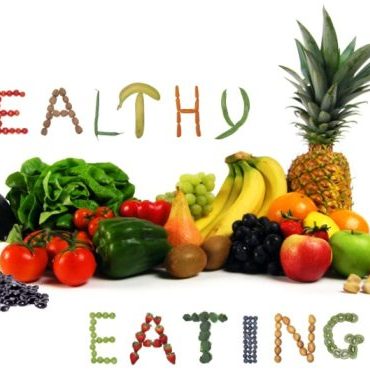 What is GI and why does chocolate make us feel so good?
What is GI and why does chocolate make us feel so good?
Are all sports drinks the same? And are they better than water?
Sports drinks, such as Powerade and Gatorade, have been cleverly designed to have just the right amount of carbohydrates (5-8g/litre) and electrolytes to keep you well hydrated. They are a good way to keep your body fuelled and hydrated, if you are exercising at a high intensity for more than 90 minutes. But for shorter, less intense sessions, plain water will do the job just as well and doesn’t contain unnecessary kilojoules.
My blood glucose levels were slightly high so my doctor told me to watch the Glycaemic index of the foods I eat. He never really explained it. What is glycaemic index and why is it so important?
Glycaemic Index (GI) is a numerical ranking from (0-100) for how quickly carbohydrate-containing foods such as breads, fruit, low fat yoghurt and cereals, raise our blood glucose levels. Carbohydrate-containing foods that are easily digested and absorbed which causes blood glucose levels to rise rapidly are called high GI foods and have a value of 70 or greater. Foods that are broken down slowly by the body and provide a more sustained supply of glucose are called low GI foods (have value of 55 or less). While you don’t need to avoid high GI foods, it is recommended that you swap them for lower GI foods.
When your sugars are high it is important to eat low GI foods. Foods with a low GI are broken down slowly during digestion, giving a slower and more sustained rise in blood glucose levels, thereby helping to provide longer lasting energy. Low GI foods also help to keep you feeling fuller for longer, which helps with appetite control and shape management. People who have difficulties managing their blood glucose levels may benefit from incorporating low GI foods into their diet too. Adding a protein to the meal brings down the glycaemic load of the meal.
You can buy books which list the Glycaemic Index of all foods.
 I love chocolate. It really makes me happy. When I feel depressed I really just need chocolate to feel better. Why do I react like this to chocolate I feel like an addict!
I love chocolate. It really makes me happy. When I feel depressed I really just need chocolate to feel better. Why do I react like this to chocolate I feel like an addict!
Good question – and one that has plagued scientists for years. Chocolate is a complex mix of fat, sugar and plant chemicals such as tyramine and phenylethylamine (PEA). PEA can effect dopamine and noradrenalin neurotransmitters in the brain, boosting mood. But these cannot be the only chemicals at work – these compounds are also found in cheese and sausages, and no-one claims to crave sausages! The stimulants caffeine and theobromine are also found in chocolate, leading some experts to think these are potentially the cause. However, these are found at much higher levels in coffee, which doesn’t have quite the same effect on us. Chocolate is also nutrient-dense, so it is possible we crave it to correct a nutrient deficiency. But research shows it is women in particular who crave chocolate, and studies have found that these cravings increase at the start of the menstrual cycle. Serotonin levels are also low at this time and research shows the body may crave carbohydrates to boost levels.
Chocolate also provides acylethanolamines, which may mimic the effect of the protein molecule in the brain called anandamide (meaning ‘internal bliss’). Anandamide can activate the same parts of the brain which the drug cannabis affects, resulting in heightened sensitivity and feelings of euphoria. While the levels of these compounds may be too low in chocolate to have any effect, some scientists hypothesis that even slightly elevated anandamide levels may magnify the sensory experience of eating chocolate, causing us to crave it. Overall, little is known about the effect of chocolate on the brain but it is a great mood food, as long as your ‘cravings’ are controlled.
I have been feeling so tired recently, so I went to my doctor who sent me for blood tests. My iron is really low. Can you please tell me a bit about iron and what it does in the body and what foods I should eat to get enough.
Iron is needed to make haemoglobin, which transports oxygen to our cells, and is important for other transport systems and enzymes. You don’t have enough so you could end up with iron-deficient anaemia with symptoms such as fatigue, rapid heart rate and heavy breathing on exertion, palpitations, and impaired immunity and cognitive function. Women of child bearing age need lots of iron, so they are potentially at risk, as are those women who have heavy periods or who don’t eat much red meat. Haem iron (which is more readily absorbed by our bodies) comes from red meat, fish and poultry. Non-haem iron sources include wholegrains, vegetables, beans and lentils. An iron fortified breakfast cereal plus one serving of red meat will provide half of your daily iron needs. Eat iron rich foods with something containing Vitamin C (fruit and vegies, tomatoes capsicum, etc).
I have Polycystic Ovarian Syndrome (PCOS) and I really struggle with my weight. I have gained so much weight and am finding it difficult to lose. Help!!!
Diet and exercise can play an instrumental role in treating PCOS. However with PCOS there is the added factor of needing to –re-balance the male hormone levels. A number of dietary approaches have been trialled to help this process, including low GI diets and higher protein diets, but unfortunately, researchers remain inconclusive on a clear winner. So aim for a generally healthy diet: eat five to six small meals a day, include plenty of veggies and fruit, legumes, low GI carbohydrates, lean protein, low fat dairy and healthy fats, and make sure you include lots of water. Don’t forget to exercise, either – it is vital that in managing PCOS, as it improves insulin resistance but it can potentially lessen menstrual disturbances and infertility. You need to see your doctor too as he/she may be able to help with some medication to restore hormone abnormalities and improve insulin sensitivity.

